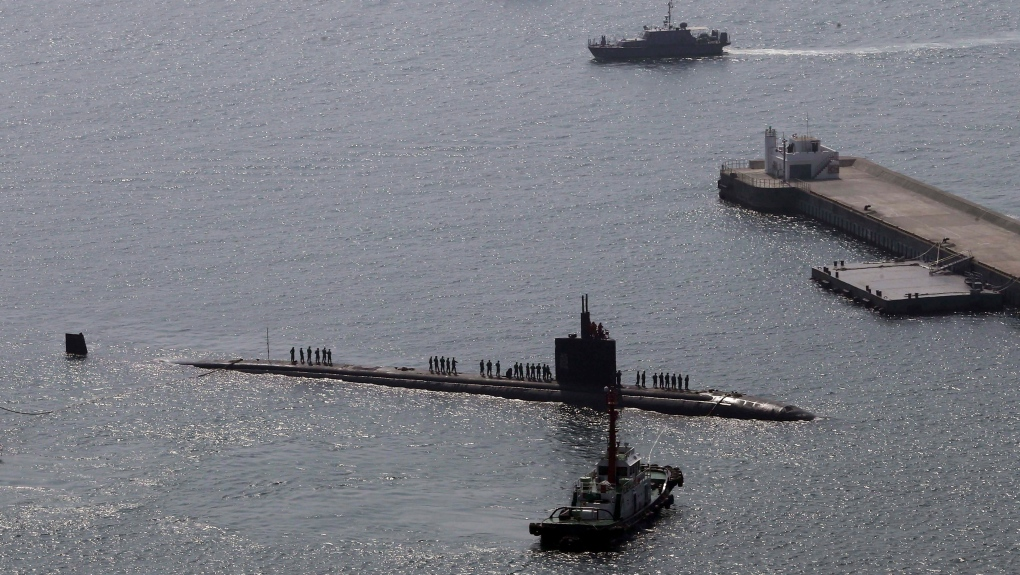US, Japan, and South Korea Hold Joint Anti-Submarine Drill Against North Korea
U.S. nuclear-powered Los Angeles class attack submarine USS Cheyenne puts in at a South Korea naval base in Busan, South Korea, March 20, 2023. The sub arrives here for the joint military exercise between South Korea and the United States. Photo: (AP Photo/Jo Jung-ho, Yonhap) KOREA OUT
On April 3 and 4, the US, Japan, and South Korea held a joint anti-submarine drill to prepare for a potential conflict with North Korea.
The drill took place in international waters near the South Korean Jeju Island. A US carrier strike group led by USS Nimitz had arrived at the South Korean city of Busan days before.
According to the South Korean Department of Defense, “the anti-submarine exercise was arranged to enhance response capabilities of South Korea, the United States, and Japan against North Korea's advancing underwater threats, including a submarine-launched ballistic missile.
In September 2022, North Korea conducted missile tests that simulated a nuclear strike against South Korea, and in 2022, North Korea fired more than 90 ballistic missiles.
The Korean Central News Agency (KCNA), a state-controlled news media in North Korea, strongly criticized the trilateral joint drill and earlier joint drills by the US and South Korea. In one of its recently published articles, KCNA claimed that “the reckless and presumptuous military expansion by the US and South Korea is destined to fail” and that “[t]he zeal of the American and South Korean belligerents leads them from one extreme to another.”
KCNA argues that the joint drills simulate a preemptive strike on North Korean territories, in particular, Pyongyang. Most importantly, KCNA stresses that North Korea is equipped with a nuclear strike ability, which is “an undeniable fact that the US and its followers shall carefully consider.” North Korea will shortly respond if the bold military aggression continues, warned KCNA. It threatens an imminent use of North Korean nuclear weapons if the deterrence strategy does not work. “Arrogant moves have prices,” emphasized KCNA.
Christopher Sweeney, center, the commander of Carrier Strike Group 11, speaks during a South Korea-U.S. joint news conference aboard the USS Nimitz aircraft carrier at the Korean naval base in Busan, March 28. Photo: Yonhap
On April 3, China responded to the trilateral joint drill by sending three warships to the Sea of Japan. Shortly after, Japan also sent warships and planes under the Japanese Self-Defense Force to inspect Chinese warships nearby. The Chinese Department of Defense said that the move reveals the intent of Japan to brew an intense situation in East Asia to justify its recent military expansion.
According to China’s domestic report, the move of the Chinese military serves to “warn the US against reckless moves.” “Back in the old days, the Chinese People’s Liberation Army (PLA) harshly beat the American military, which we can for sure accomplish again if the US comes in again today,” according to the Chinese news article. The statement alludes to the Korean War in the 1950s. The PLA’s performance in the war is primarily seen as successful and represents a symbol of Chinese resurgence in the eyes of the Chinese people.
On April 3, Mao Ning, the spokesperson of the Chinese National Foreign Ministry, claimed that the continued military drills around the Korean Peninsula joined by “some countries” is to be blamed for the endurance of the intense situation in the Korean Peninsula.
As shown, the conflicts between North and South Korea involve more state actors, as Japan, the US, China, and Russia stepped in one after another. This complicates and adds further uncertainty to the East Asian geopolitical situation.


